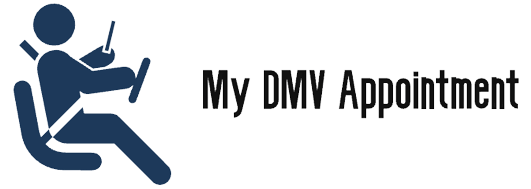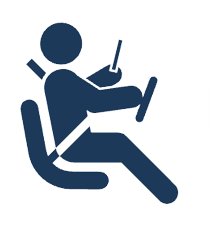Understanding your California DMV driving record is essential. It’s the official document that affects your insurance rates, employment opportunities, and, most importantly, your legal driving status.
This is the only official way to check the points on your license.
The good news is that you can get a copy of your record instantly online, as well as by mail or in person. This guide will walk you through all three methods, explain the real costs, and show you exactly how the California point system works.
How to Get Your Record ONLINE (The $2 Instant Method)
This is the fastest and most common way to check your record. You get an unofficial copy that you can download and print immediately. This is perfect for checking your points or for a personal insurance quote.
Important: This is not free. The official DMV fee is $2.00.
- Go to the Official CA DMV Website: Navigate to the DMV Online Services Portal.
- Log In to “MyDMV”: You must have a “MyDMV” account. If you don’t, you’ll need to create one. This is a one-time setup that requires you to verify your identity.
- Request Your Record: Once logged in, select the service “Driver’s Record Request.”
- Pay the $2.00 Fee: Use a valid credit/debit card to pay the fee.
- Download and Print: The system will immediately provide a PDF of your unofficial driving record. You can save and print this for your files.
How to Order Your Official Record (By Mail or In-Person)
You must use this method if you need an official, certified copy for a court appearance or a potential employer.
- Cost: $5.00
- Form: Driver Record Request (Form INF 1125)
Method A: By Mail (For Certified Copies)
- Download and Complete Form INF 1125: Fill out the form with your full name, driver’s license number, and date of birth.
- Include Payment: Include a $5.00 check or money order payable to “DMV.” Do not send cash.
- Mail Your Request: Send the completed form and your payment to the address listed on the form:DMV Information Services P.O. Box 944247 Sacramento, CA 94244-2470
Method B: In-Person (Walk-In)
- Visit a DMV Field Office: You can find your local office on the DMV’s website. (You can also book a DMV appointment for an “Office Visit” to avoid the line).
- Complete Form INF 1125: You can fill out the form at the office.
- Pay the $5.00 Fee: You will pay the fee at the counter.
- Receive Your Record: The DMV will give you the official 3-year, 7-year, or 10-year record on the spot.
How the California Point System (NOTS) Actually Works
Once you have your record, you can see your point total. California’s “Negligent Operator Treatment System” (NOTS) will trigger a license suspension based on this total.
You will be suspended if you accumulate:
- 4 points in 12 months
- 6 points in 24 months
- 8 points in 36 months
Points are assigned based on the violation:
| Points | Common Violations | How Long on Record |
| 1 Points | Most moving violations (e.g., speeding, stop sign, at-fault accident) | 3 years (39 months) |
| 2 Points | Serious violations (e.g., DUI, Hit-and-Run, Reckless Driving, Driving on a suspended license) | 10 years (13 years) |
How to Correct Errors On Your CA Driving Record
If you find an error on your record (e.g., a “Not Guilty” verdict is still showing as a conviction), you must correct it.
- Identify the Error: Pinpoint the exact mistake on your record.
- Gather Proof: You must have your court documentation, such as a court abstract or a certified letter from the court proving the error.
- Fill Out the Correct Form:
- For most errors, use the Driver License Record Correction Request (DL 207).
- For accident corrections, use the Traffic Accident Record Correction Request (DL 208).
- Submit Your Request: Mail the completed form and your proof to the DMV headquarters address listed on the form. This process is free.
FAQs
Yes, but it’s not a “record.” It’s a “License Status Check.”You can log in to your MyDMV account on the DMV website, and it will give you a simple, one-word status (e.g., “VALID” or “SUSPENDED”). This is the free way to see if you have an active suspension, but it will not show you your points or violation history.
The points will not appear on your record until after you have been convicted. This means after you have paid the fine or have been found guilty in court.
Yes, but with a key difference. Traffic school in California does not “remove” a point. It “masks” the conviction from your insurance company. The conviction will still appear on your official record, but with a note that you completed traffic school, and it will not be visible to your insurer. You are typically only eligible to do this once every 18 months.
You must enroll in the Employer Pull Notice (EPN) Program. This allows your company to register its drivers and receive automatic updates from the DMV when a driver gets a new violation, suspension, or crash.


Add Comment